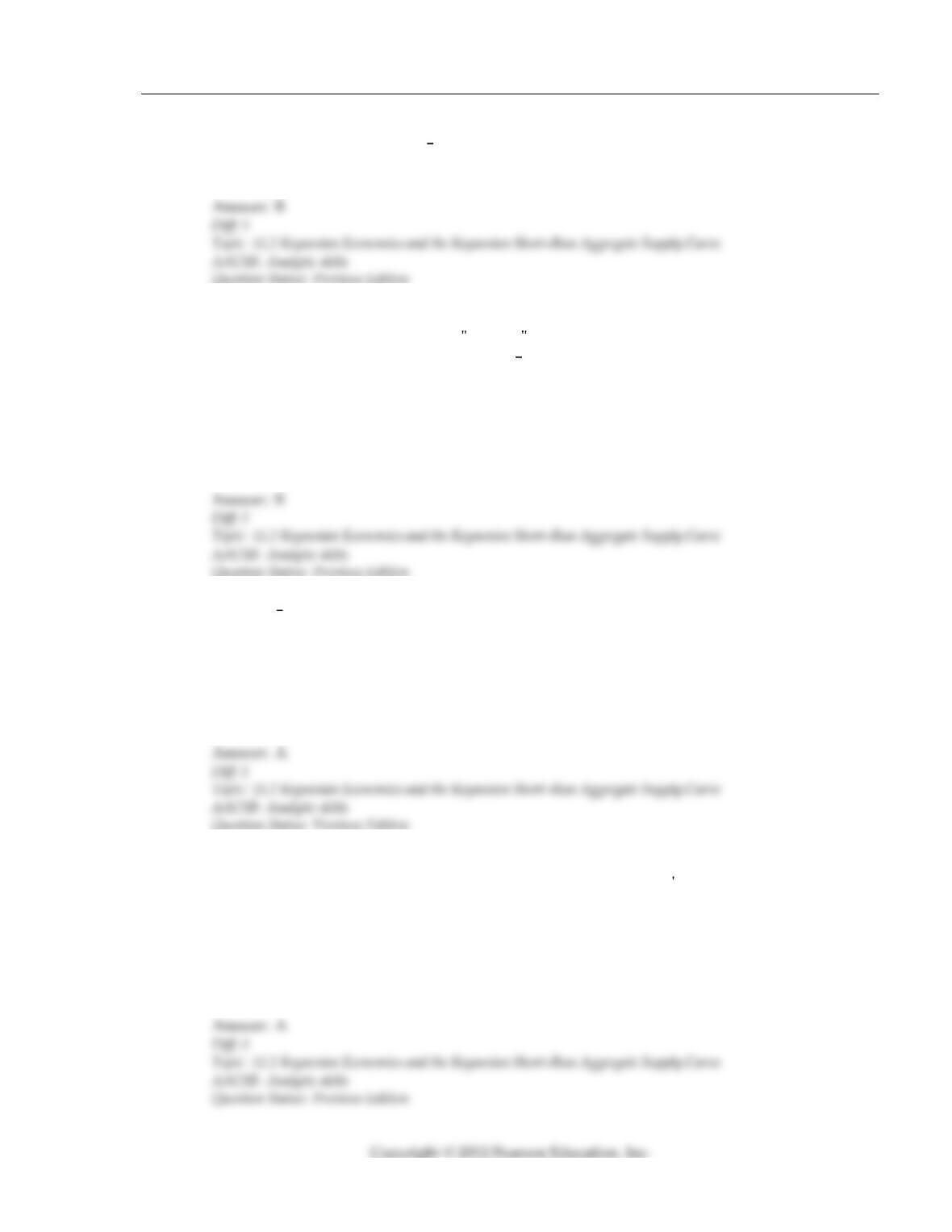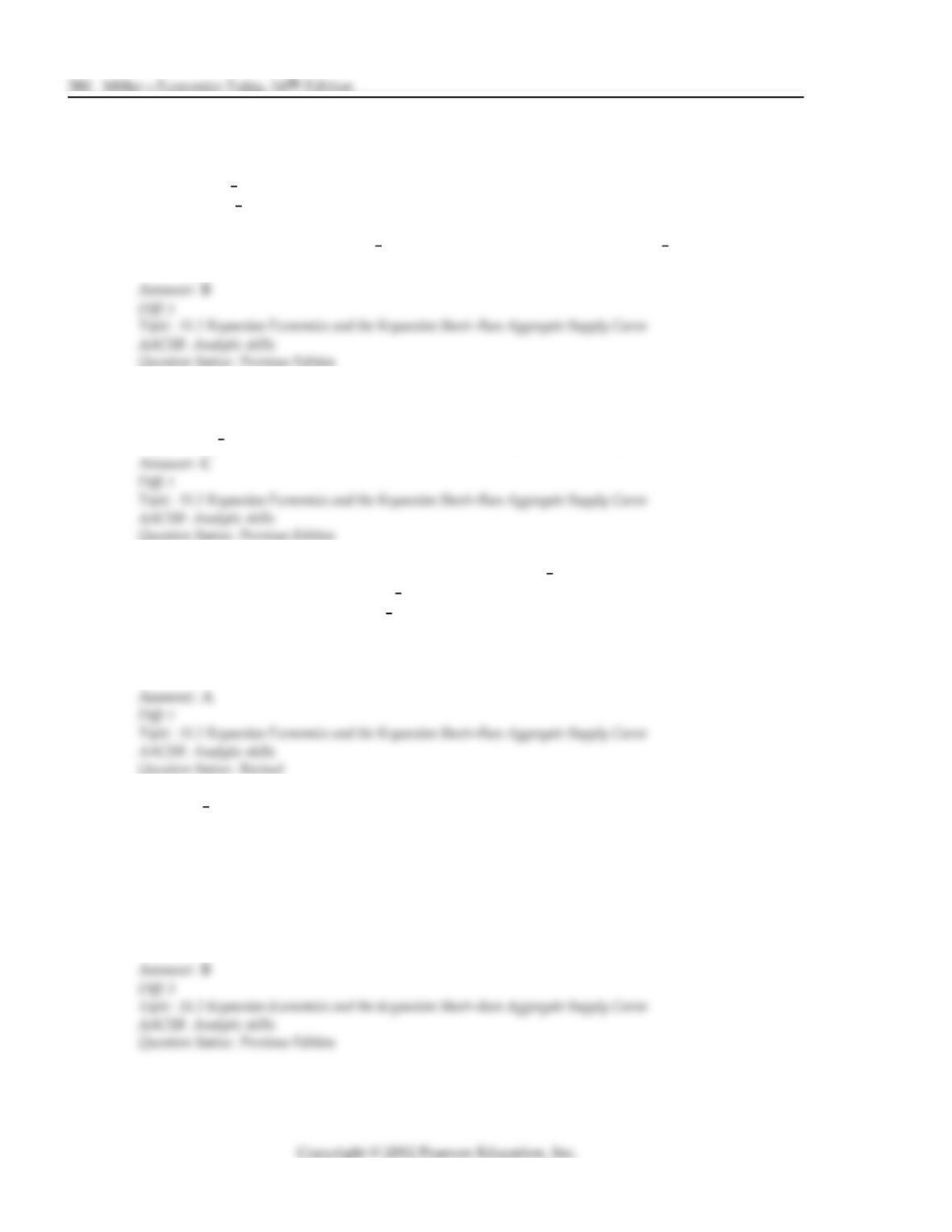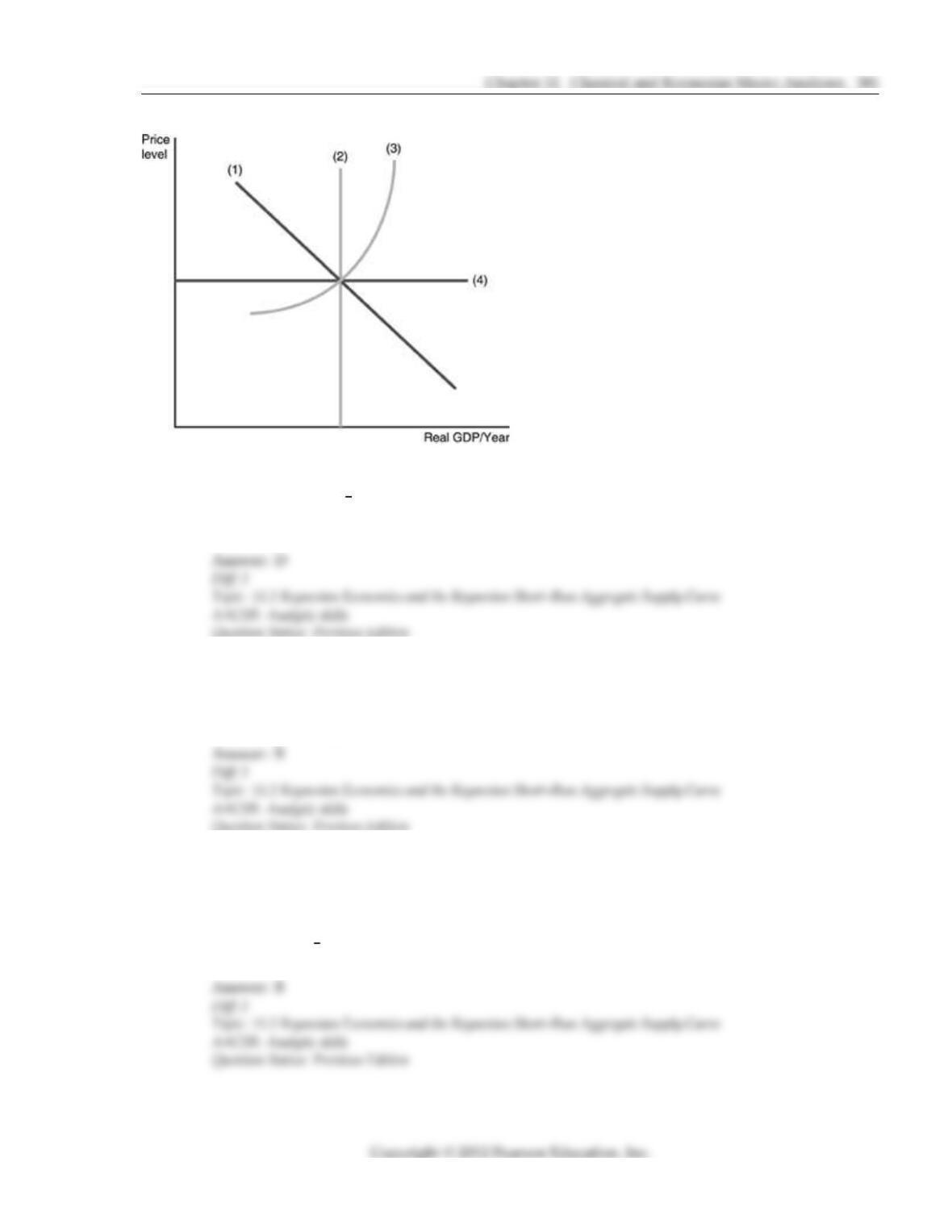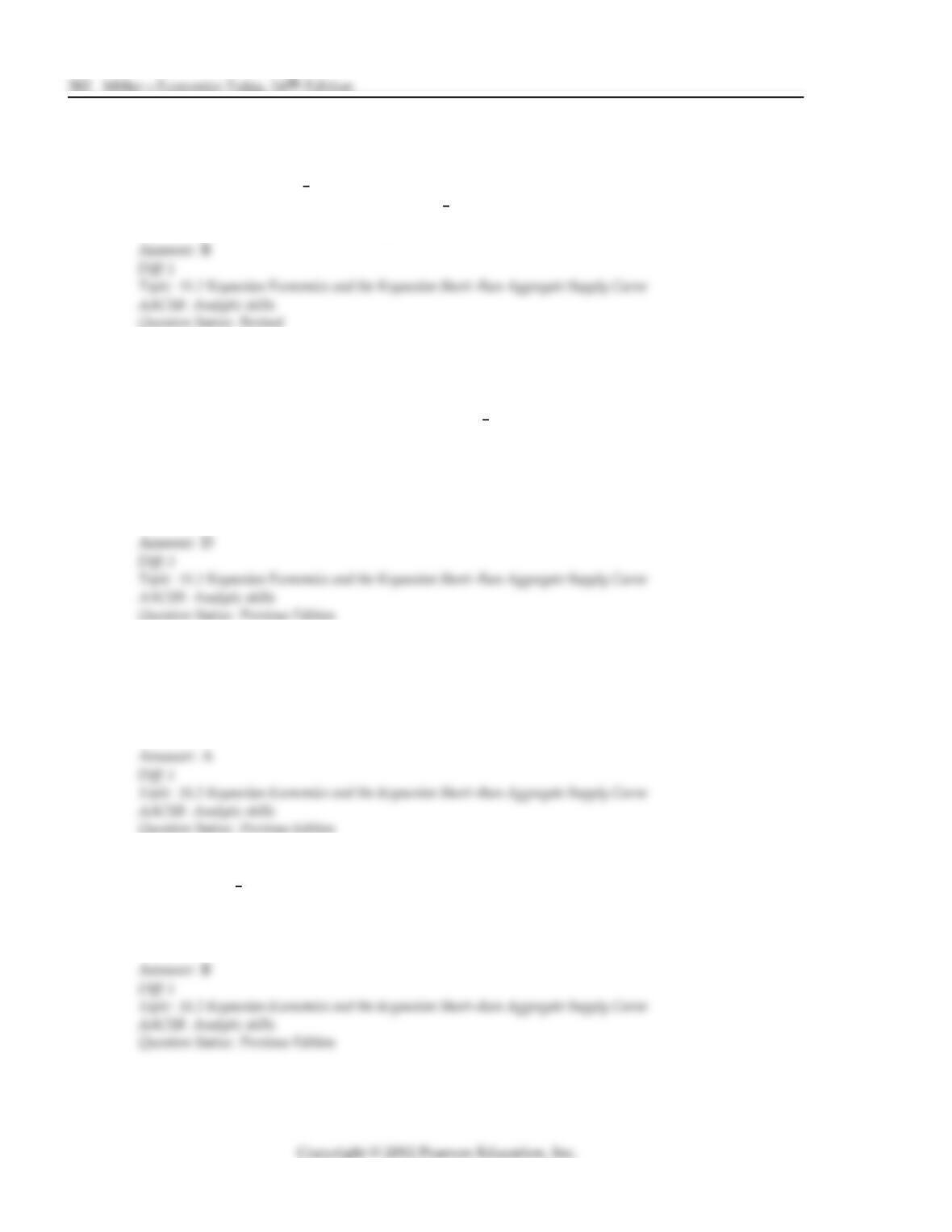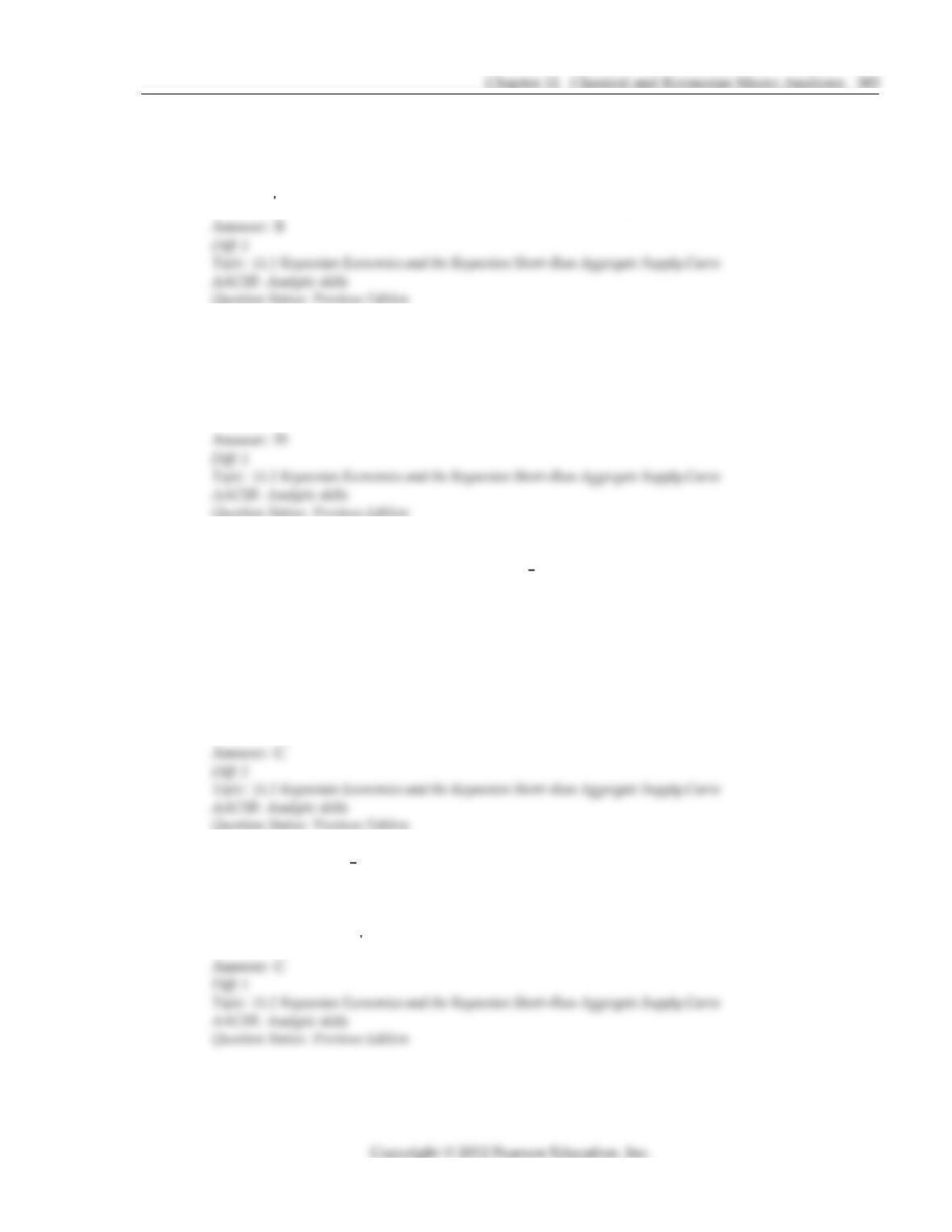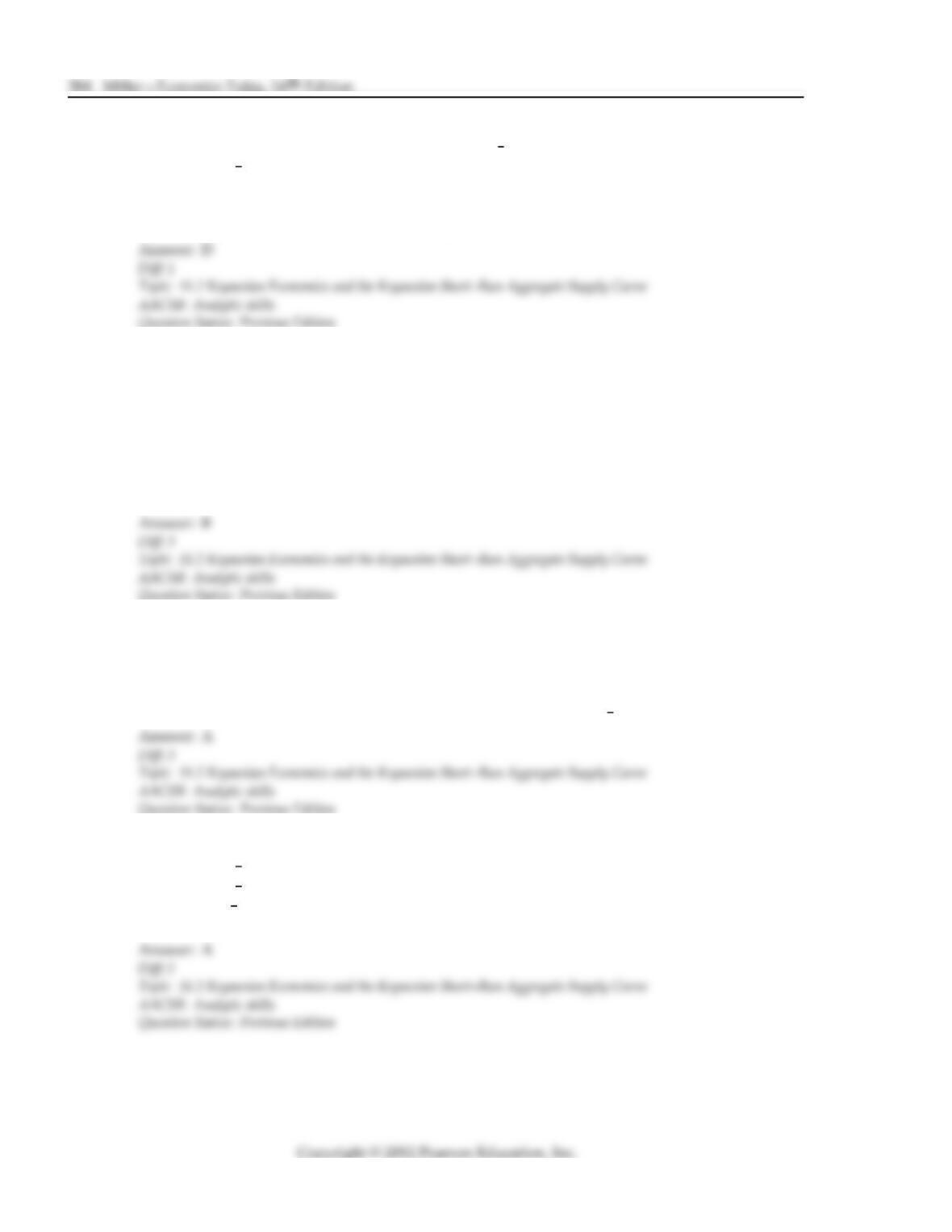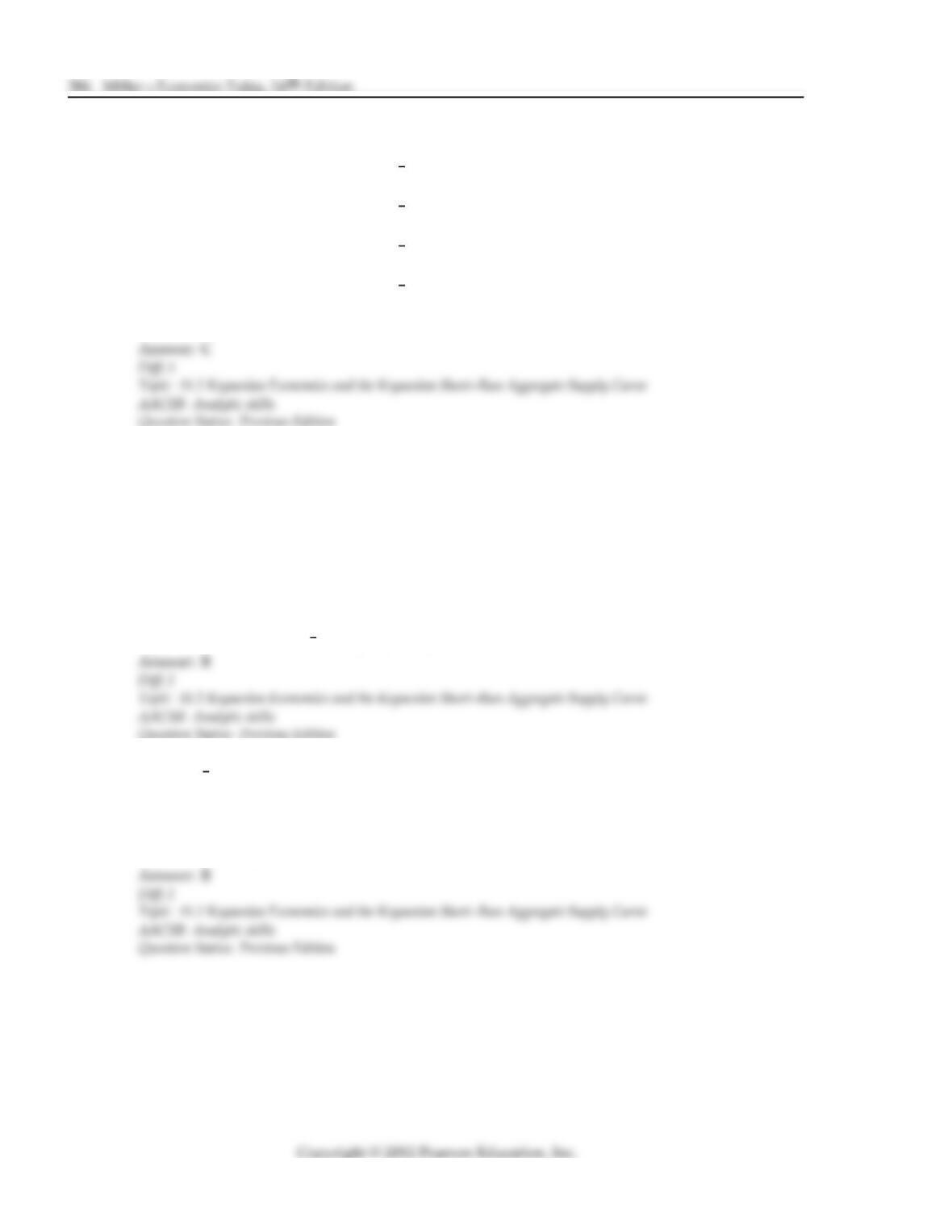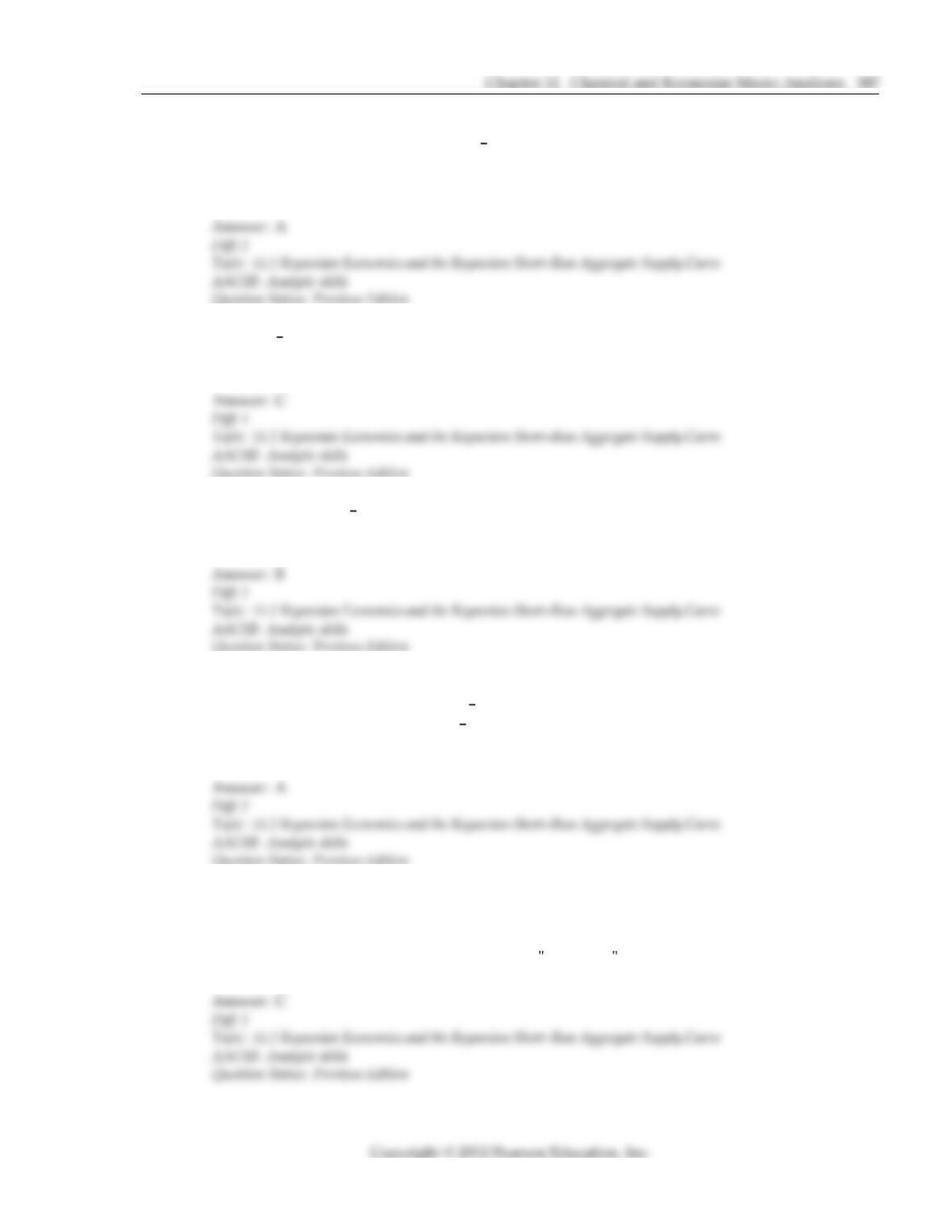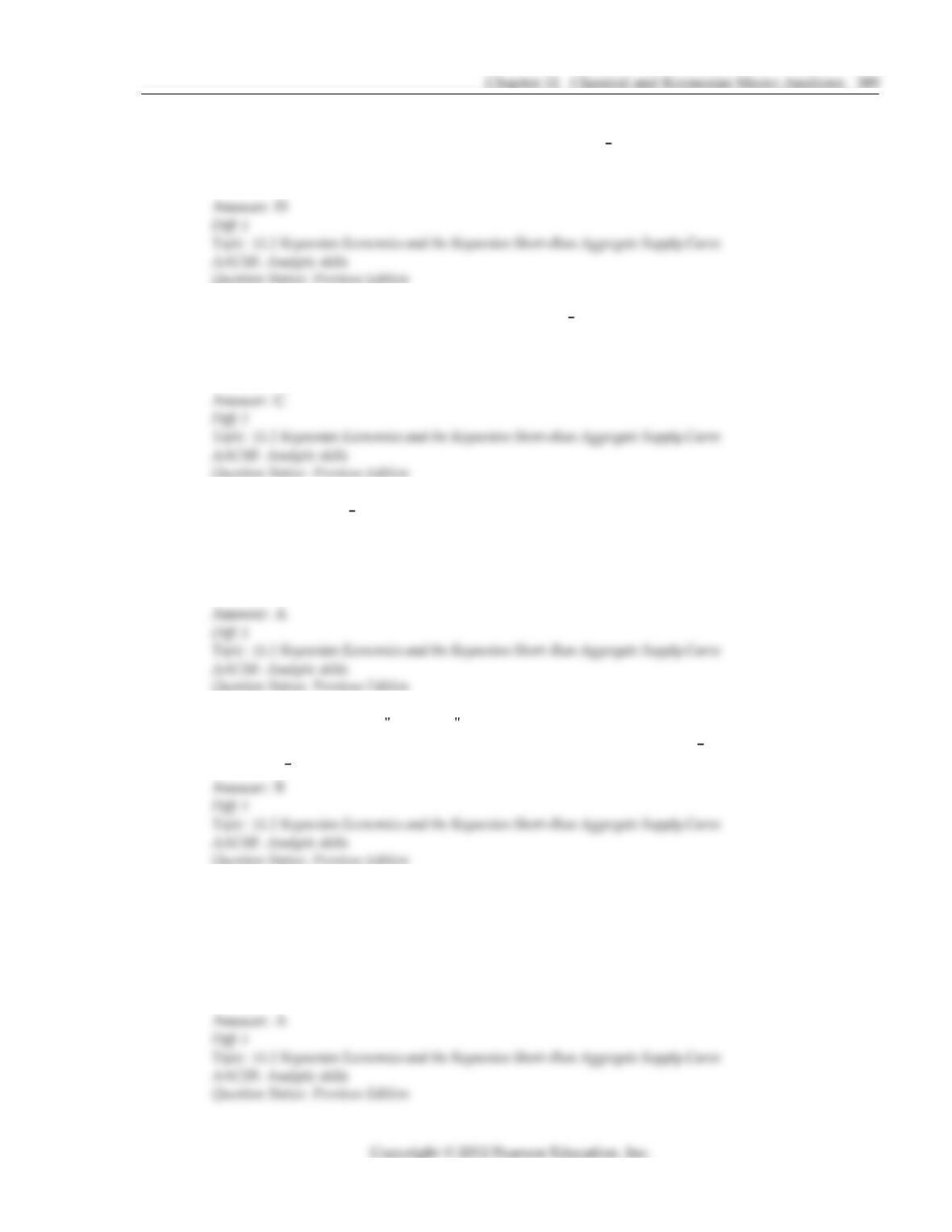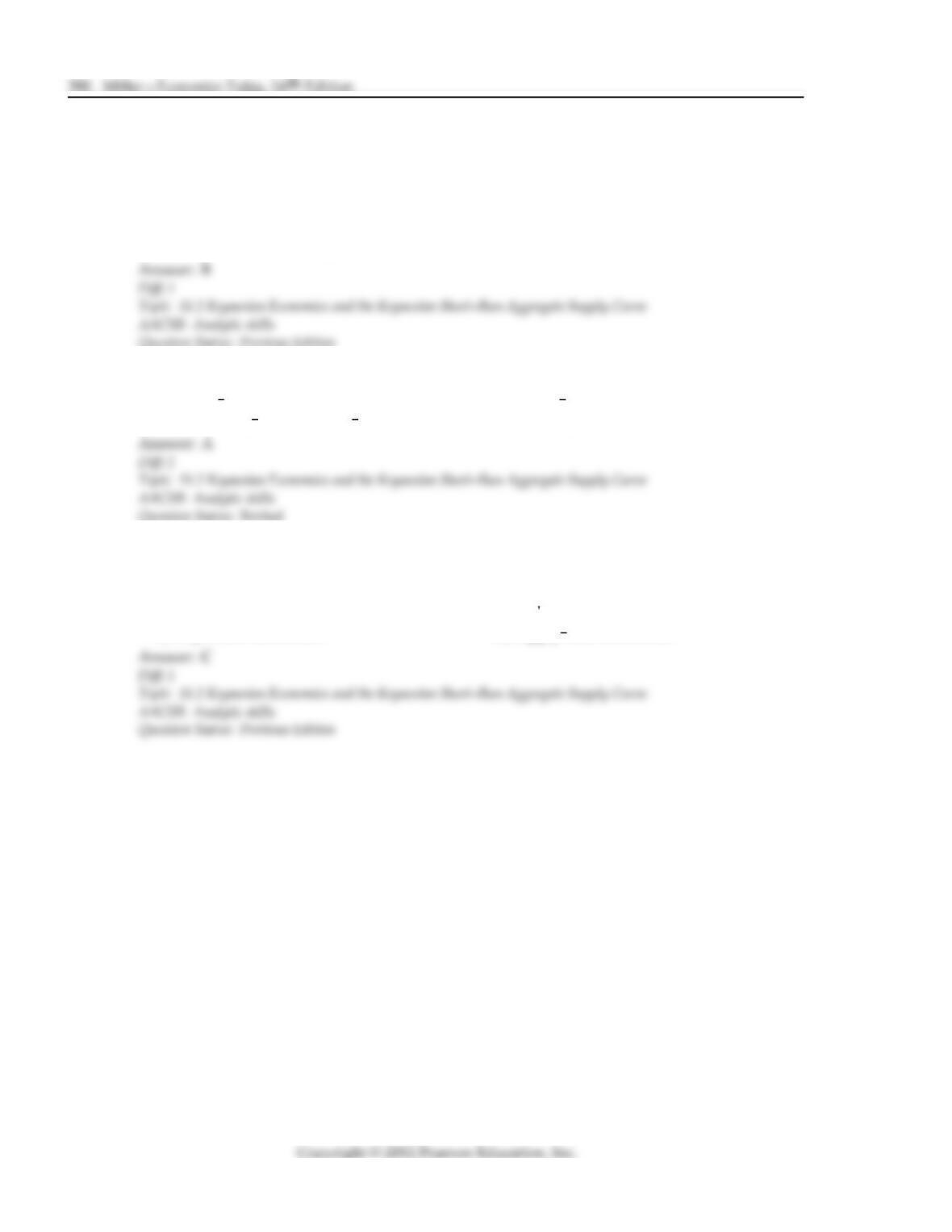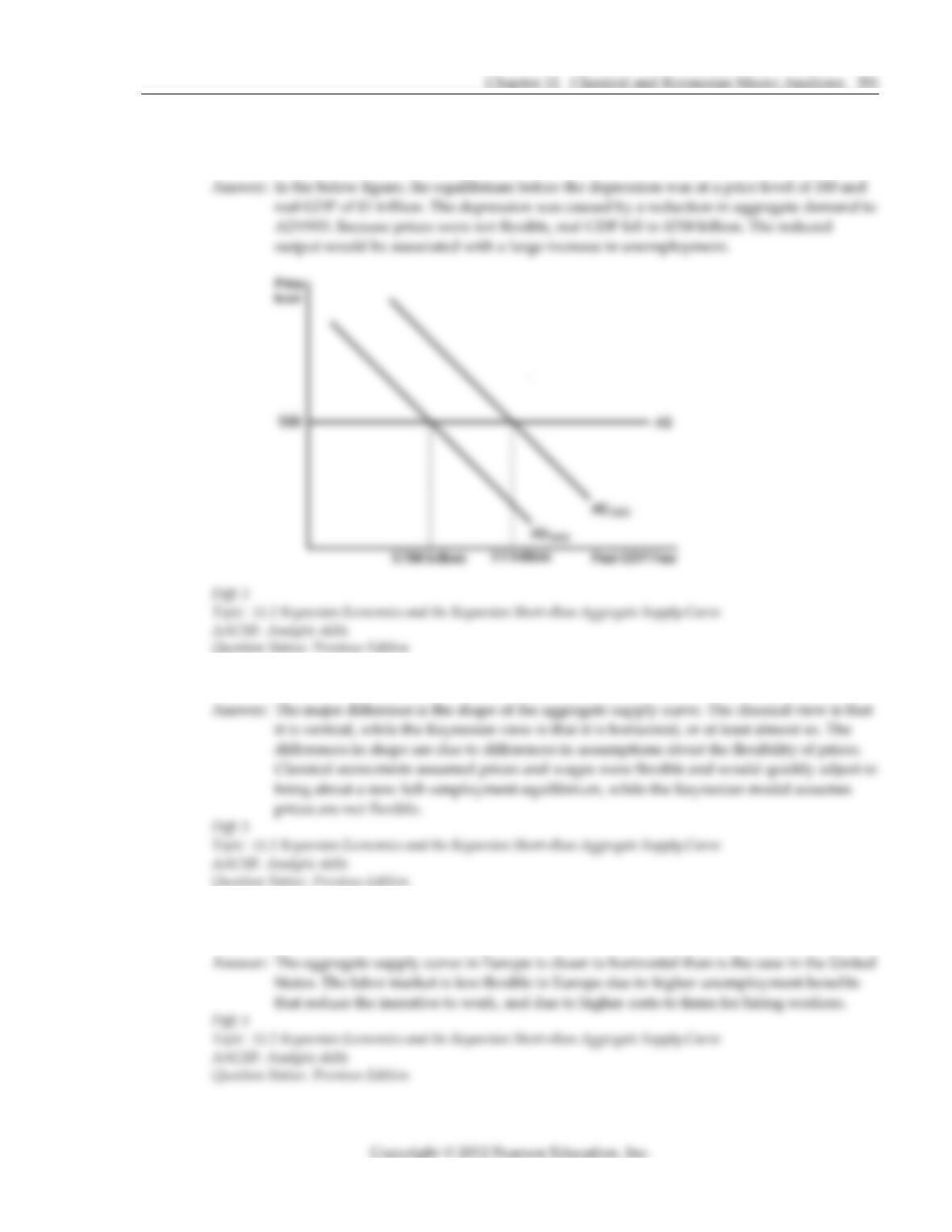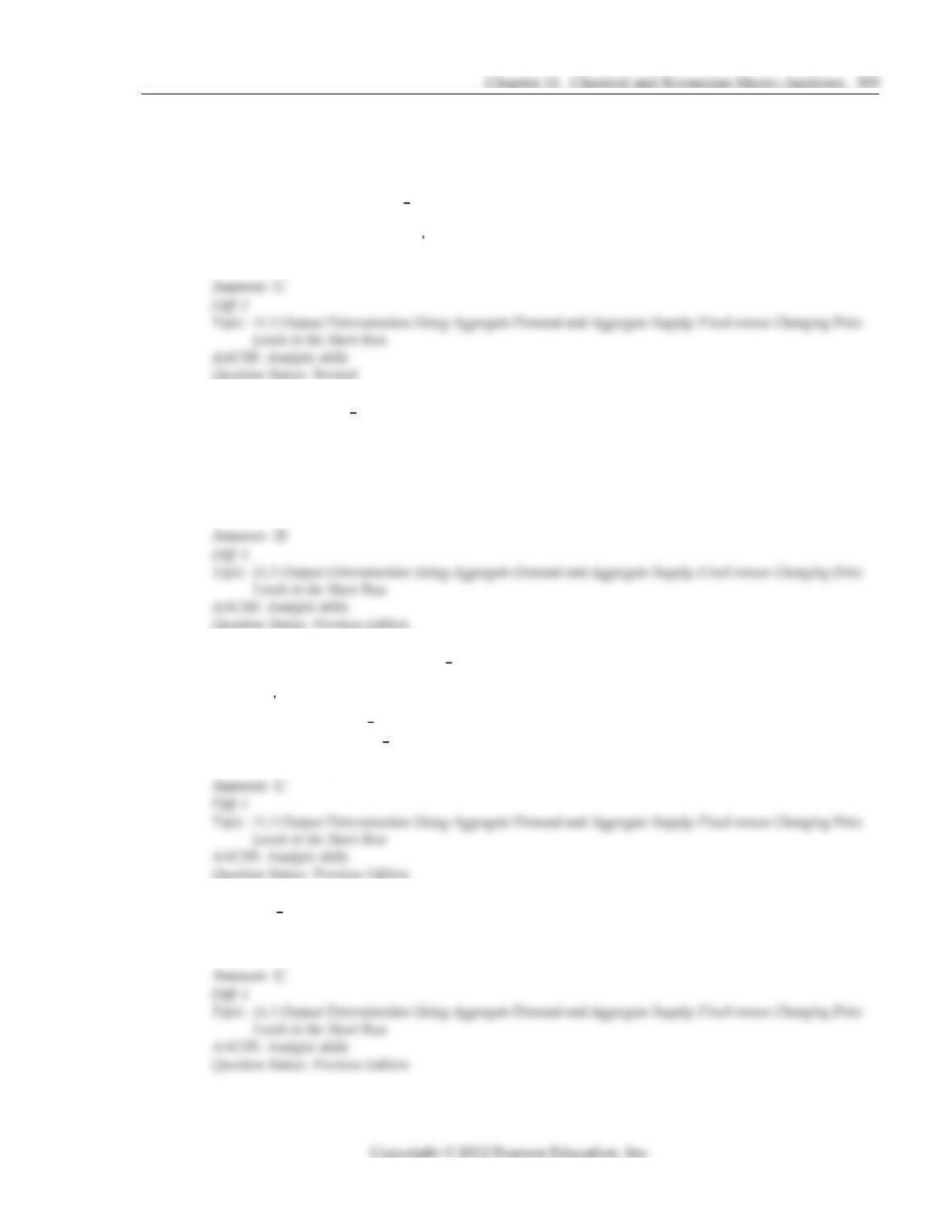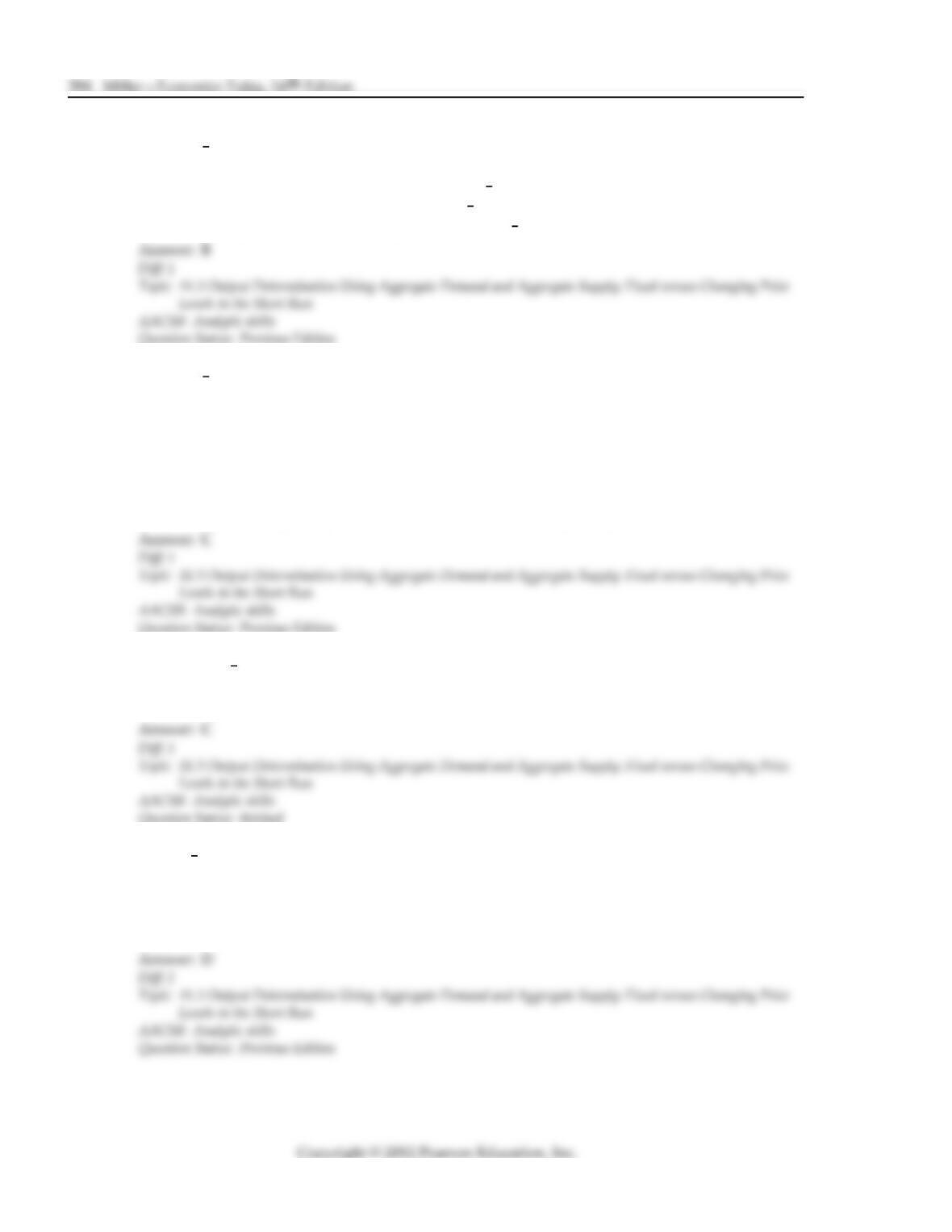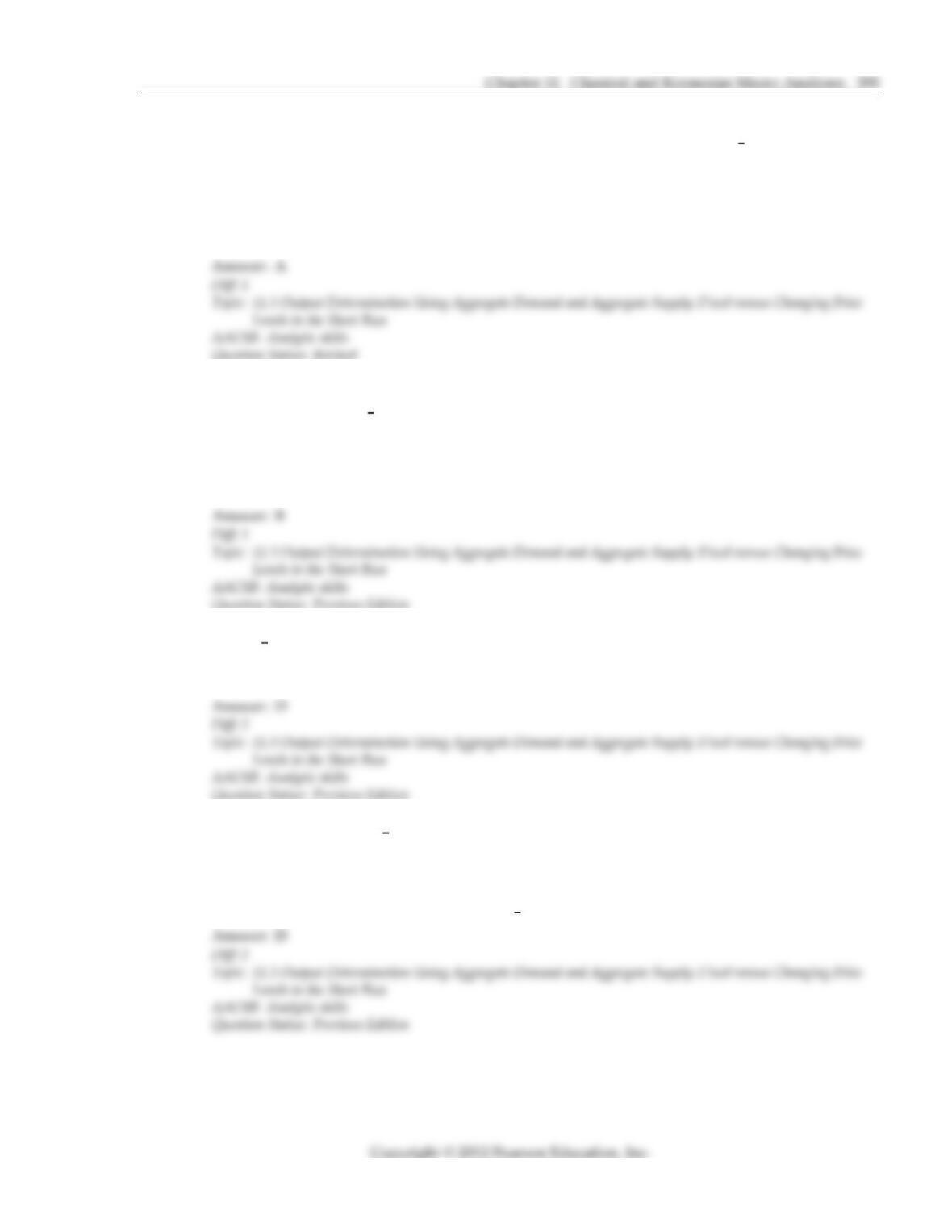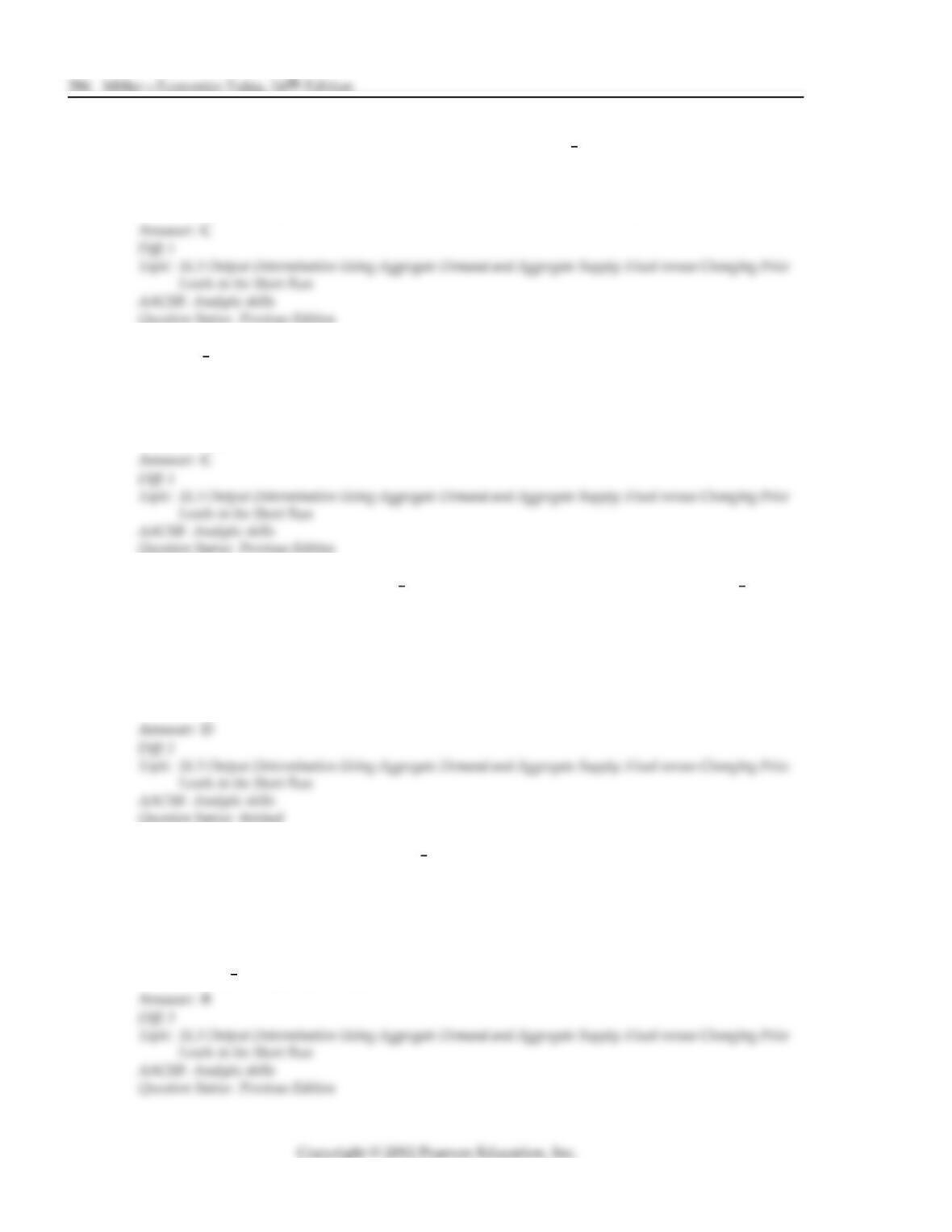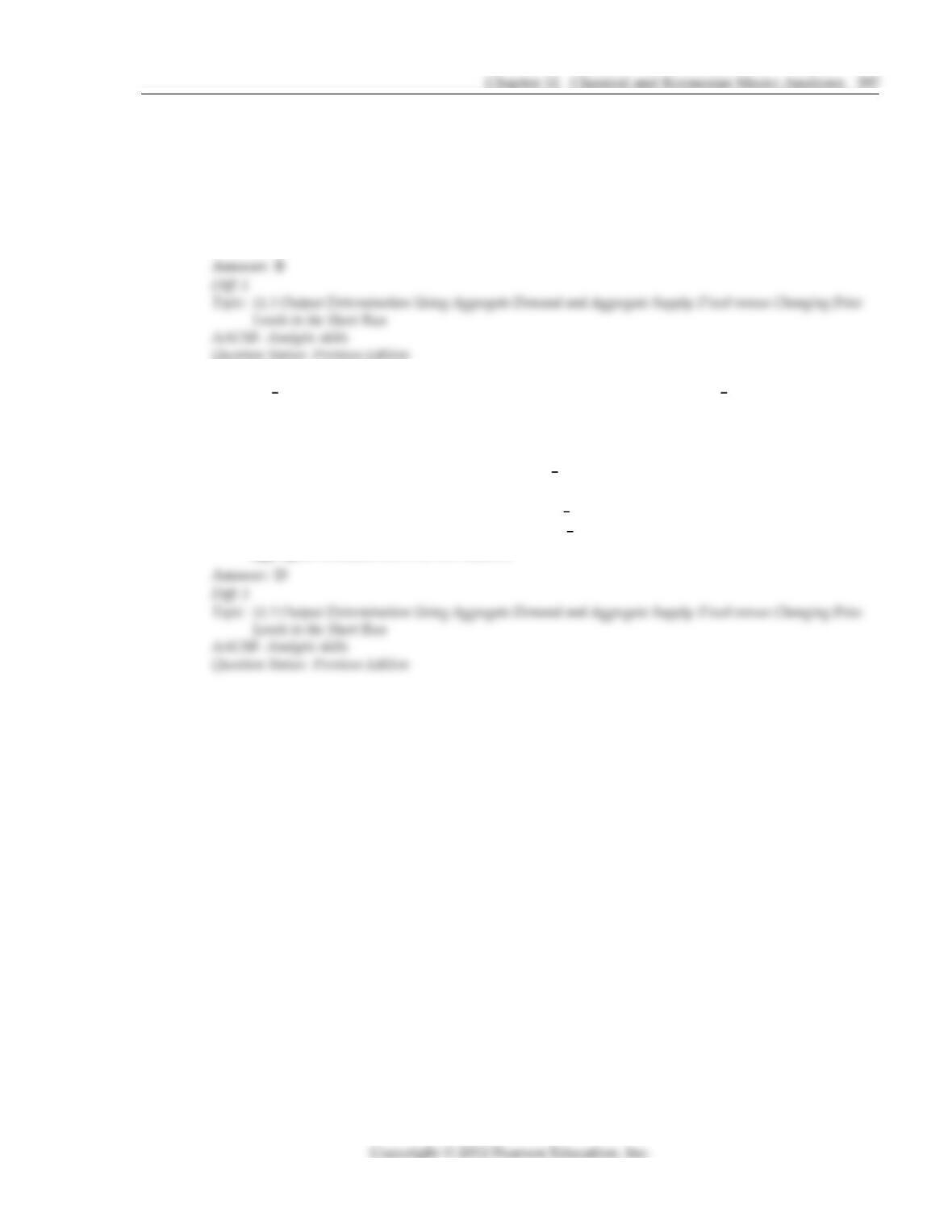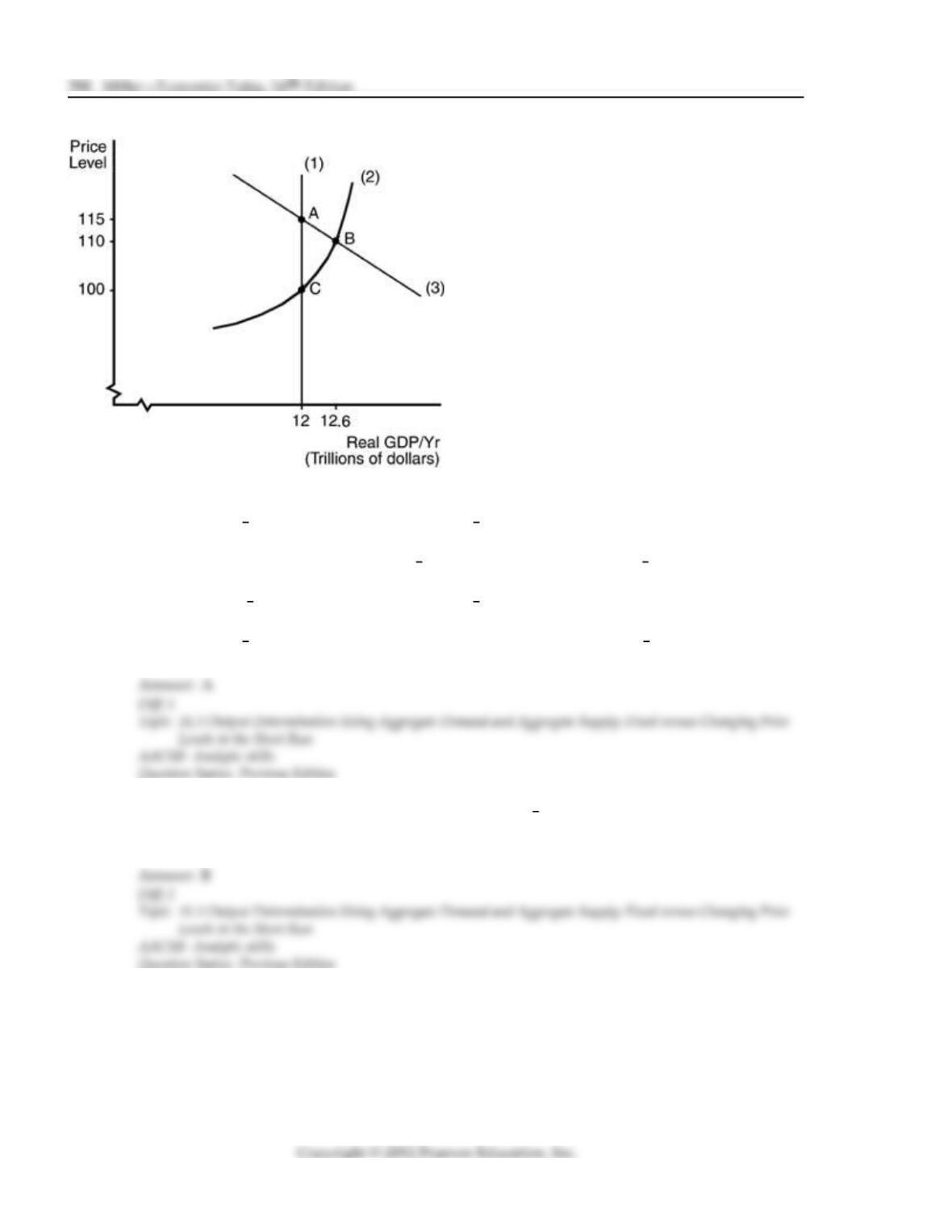Chapter 11 Classical and Keynesian Macro Analyses 379
21) Keynes suggested that the short run aggregate supply (SRAS) curve
A) is vertical. B) is horizontal.
C) slopes downward. D) is not a relevant concept.
22) Keynesian economics predicts that if government policy makers deem current equilibrium real
Gross Domestic Product (GDP) to be too low, then an appropriate policy action would be to
A) do nothing, because the economy is self adjusting.
B) raise government spending, thereby increasing aggregate demand and pushing up real
Gross Domestic Product (GDP) with little or no inflationary consequences.
C) increase taxes, thereby causing aggregate demand to increase and inducing a rise in real
Gross Domestic Product (GDP) with little or no inflationary consequences.
D) reduce the money stock, thereby causing aggregate demand to decrease and inducing a
rise in fall in the price level that generates an increase in total planned expenditures.
23) The short run aggregate supply (SRAS) curve represents the relationship between
A) the price level and the real Gross Domestic Product (GDP) without full adjustment or full
information.
B) the price level and the real Gross Domestic Product (GDP) without full adjustment but
with full information.
C) the price level and the nominal Gross Domestic Product (GDP).
D) the decisions of producers and the decisions of consumers.
24) In the short run, an increase in the price level induces firms to expand production because
A) prices of inputs are held constant, so the higher prices for firms products imply that it is
profitable to expand production.
B) each firm must keep its production level up to the level of its rivals, and some firms will
expand production as the price level increases.
C) higher prices allow firms to hire more inputs by offering higher prices for inputs, which
increases productivity and profits.
D) they can increase profits by increasing maintenance costs.
